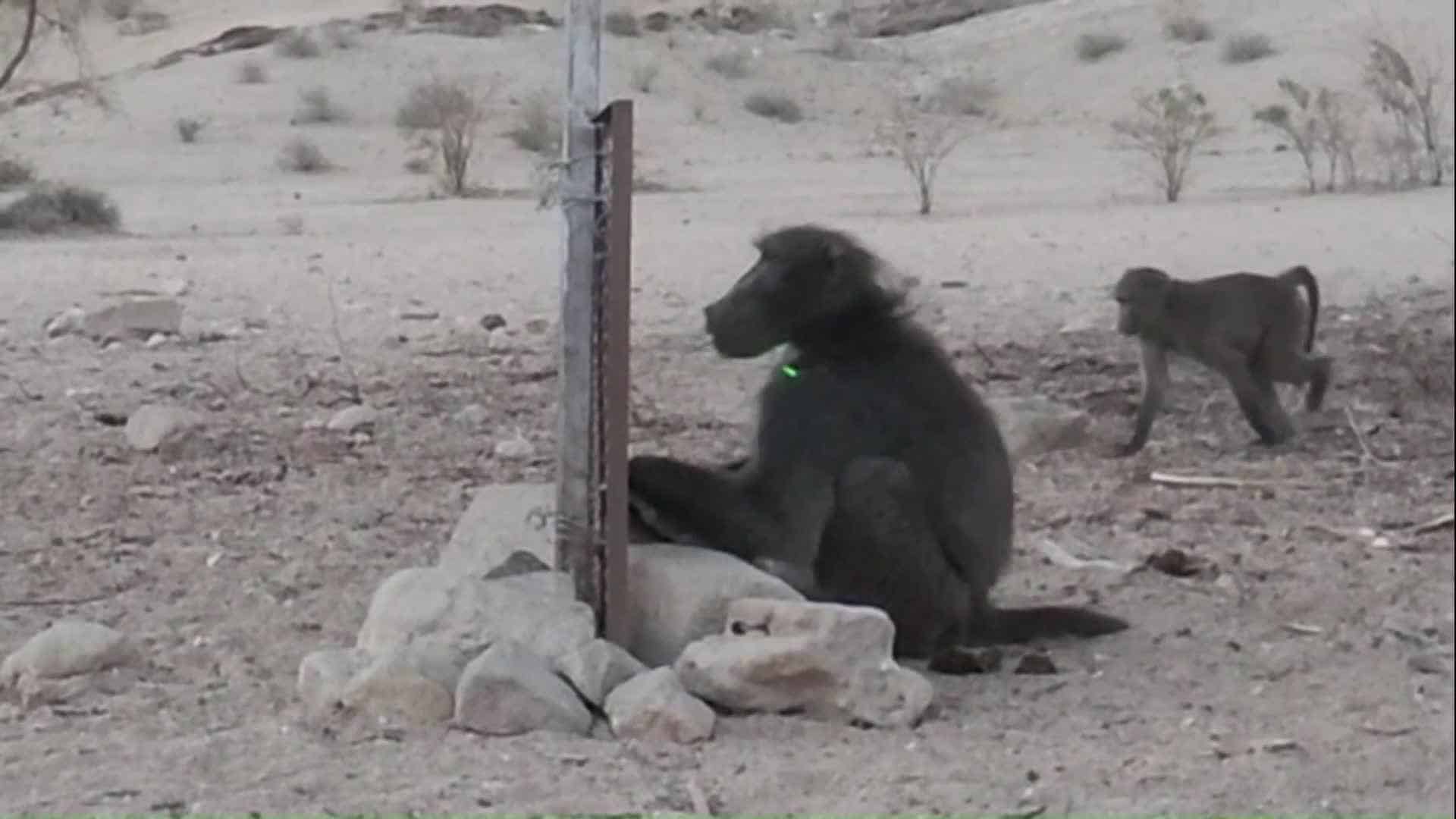Baboons and Self-Recognition: A Study in Namibia

Recent research has revealed intriguing insights into the self-awareness of baboons. Observations conducted in their natural habitat show that these primates look at their reflections in mirrors but do not recognize themselves. This study raises important questions about the nature of self-awareness in animals. While some species, like chimpanzees and dolphins, have demonstrated self-recognition, baboons appear to lack this ability. The findings suggest that self-awareness may not be a universal trait among primates.
Study Conducted on Wild Baboons
A comprehensive study was published in the Proceedings of the Royal Society B: Biological Sciences. Researchers spent five months in Namibia’s Tsaobis Nature Park, where they set up large mirrors near water sources frequented by two troops of chacma baboons (Papio ursinus). The goal was to observe how these baboons interacted with their reflections. The researchers aimed to determine if the baboons could connect their reflections with their physical bodies.
During the study, researchers directed a laser dot onto the baboons’ cheeks or ears while they looked into the mirrors. This method was designed to assess the baboons’ reactions and their ability to recognize themselves. The setup allowed researchers to observe whether the baboons would react to the dot on their faces, indicating self-recognition. However, the results were surprising. While the baboons showed interest in the mirrors, they did not respond to the laser dot on their faces. This lack of reaction suggests that the baboons may not associate their reflection with their own identity.
Findings Suggest a Lack of Self-Recognition
Alecia Carter, an evolutionary anthropologist at University College London, commented on the complexity of self-awareness. She noted that assessing this trait in animals is challenging. The mark test, a common method for evaluating self-recognition, has been used successfully with other species. In this test, an unseen mark is placed on an animal’s face, and researchers observe its reaction in a mirror.
In the case of the baboons, the results were telling. Although 64 percent of the 91 baboons tested touched visible marks on their arms or legs, only one out of 51 baboons reacted when the dot was on their face or ear. Some baboons seemed to notice the mark but did not attempt to touch their faces. This lack of response raises questions about the baboons’ ability to recognize themselves in mirrors, a trait that has been observed in other primate species.
Self-Awareness May Exist on a Spectrum
James Anderson, a primatologist at Kyoto University, pointed out that the findings align with previous research indicating that non-ape primates generally do not recognize themselves in mirrors. While some trained rhesus monkeys have learned to use mirrors for self-exploration, the baboons in this study did not exhibit similar behavior. This suggests that self-awareness may not be a trait shared by all primates.
Masanori Kohda, an animal sociologist at Osaka Metropolitan University, offered an interesting perspective. He suggested that the baboons may not perceive the laser dot as part of their bodies. Since the dot does not move in sync with their faces, the baboons might interpret it as a mark on the mirror itself rather than on their reflection. This interpretation could explain their lack of response.
Psychologist Lindsay Murray from the University of Chester emphasized that self-awareness develops gradually in humans. She noted that only 65 percent of children pass the mirror test by the age of two. This observation has led researchers to consider self-awareness as a trait existing on a continuum rather than a binary characteristic. Carter added that self-awareness may not be essential for survival in baboons. These primates thrive in their natural environment without needing to recognize their reflections, suggesting that self-recognition may not be crucial for all species.
Observer Voice is the one stop site for National, International news, Sports, Editor’s Choice, Art/culture contents, Quotes and much more. We also cover historical contents. Historical contents includes World History, Indian History, and what happened today. The website also covers Entertainment across the India and World.

